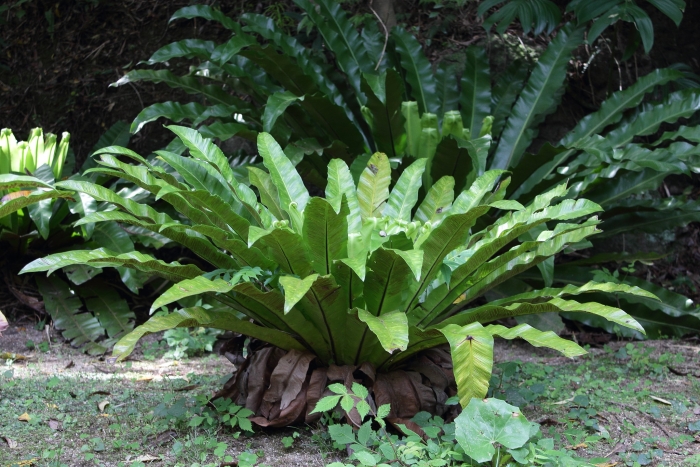Japanese Bird’s-Nest Fern
(Asplenium antiquum)
Japanese Bird’s-Nest Fern (Asplenium antiquum)
/
/

harum.koh
CC BY-SA 2.0
Image By:
harum.koh
Recorded By:
Copyright:
CC BY-SA 2.0
Copyright Notice:
Photo by: harum.koh | License Type: CC BY-SA 2.0 | License URL: https://creativecommons.org/licenses/by/2.0/ | Uploader: harum.koh | Publisher: Flickr |






























Estimated Native Range
Summary
Asplenium antiquum, commonly known as Japanese Bird’s-Nest Fern, is an evergreen fern native to the temperate forests of East Asia, particularly Japan and Taiwan. It typically grows to a size of 2–3 ft. (60–90 cm) and is characterized by its rosette of glossy, lance-shaped fronds that emerge from a central nest-like crown, giving it its common name. The fronds can be quite showy, with a rich green color that adds a lush, tropical feel to any setting.
Japanese Bird’s-Nest Fern is appreciated for its low maintenance requirements and air-purifying qualities. It is often used as an ornamental plant in subtropical climates and as a houseplant in cooler regions. In cultivation, it thrives in environments that mimic its native habitat, such as greenhouses or terrariums, where high humidity and bright, indirect light can be provided. It is important to maintain consistent moisture without overwatering, as the soil should be kept humid but not soaking. This fern is well-suited for shaded areas in the garden or as a potted plant indoors. It does not tolerate direct sunlight or dry conditions well. While generally pest-free, it can occasionally suffer from scale insects or mealybugs.CC BY-SA 4.0
Japanese Bird’s-Nest Fern is appreciated for its low maintenance requirements and air-purifying qualities. It is often used as an ornamental plant in subtropical climates and as a houseplant in cooler regions. In cultivation, it thrives in environments that mimic its native habitat, such as greenhouses or terrariums, where high humidity and bright, indirect light can be provided. It is important to maintain consistent moisture without overwatering, as the soil should be kept humid but not soaking. This fern is well-suited for shaded areas in the garden or as a potted plant indoors. It does not tolerate direct sunlight or dry conditions well. While generally pest-free, it can occasionally suffer from scale insects or mealybugs.CC BY-SA 4.0
Plant Description
- Plant Type: Fern
- Height: 2-4 feet
- Width: 2-4 feet
- Growth Rate: Slow
- Flower Color: N/A
- Flowering Season: Non-Flowering
- Leaf Retention: Evergreen
Growth Requirements
- Sun: Full Shade
- Water: Medium, High
- Drainage: Fast
Common Uses
Deer Resistant, Low Maintenance, Potted Plant, Street Planting
Natural Habitat
native to the temperate forests of East Asia, particularly Japan and Taiwan
Other Names
Common Names: Tani-Watari, Ō-Tani-Watari, Blankbräken
Scientific Names: , Asplenium antiquum, Neottopteris antiqua, Neottopteris rigida var. erubescens, Thamnopteris antiqua, Thamnopteris antiquum,
GBIF Accepted Name: Asplenium antiquum Makino